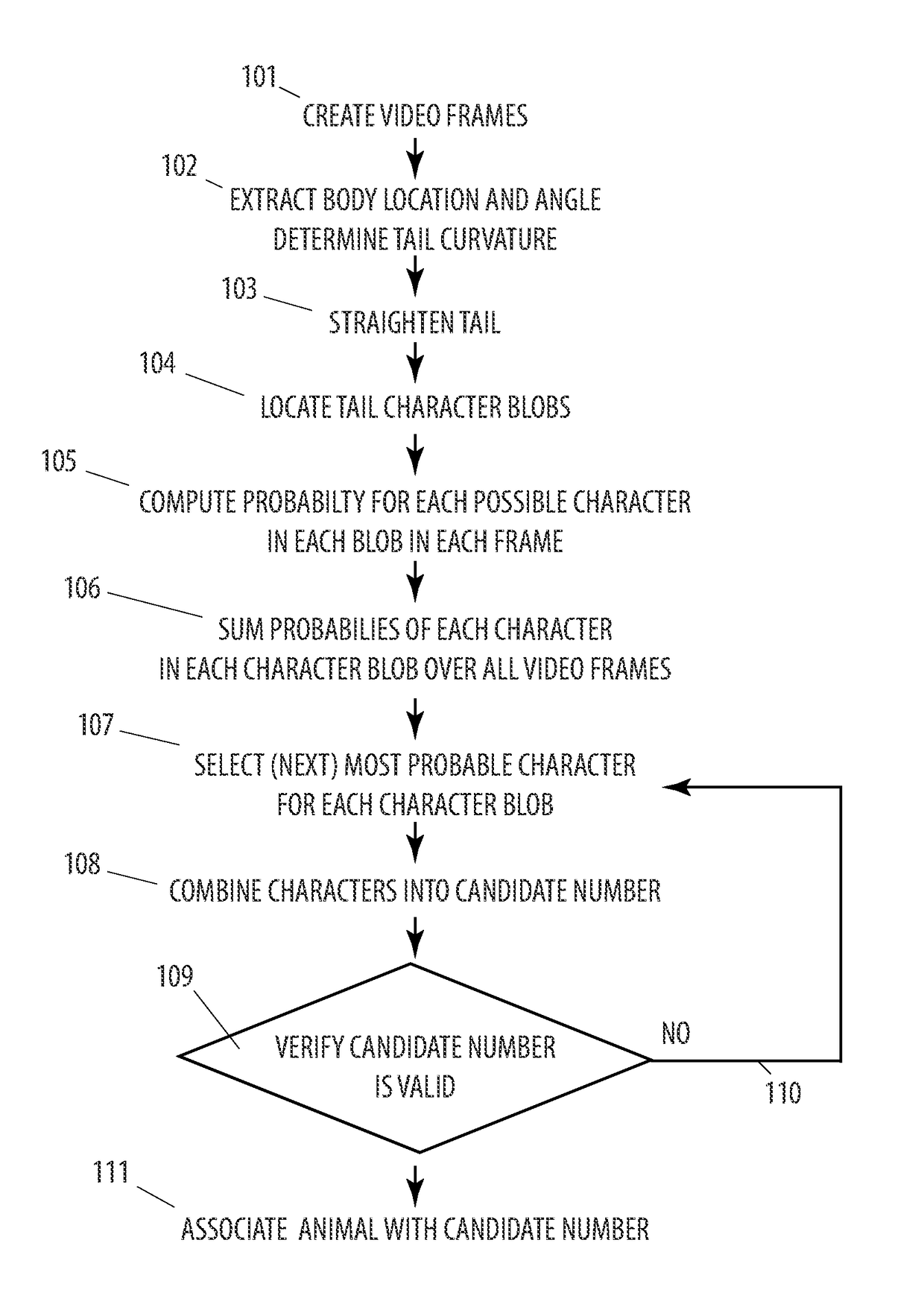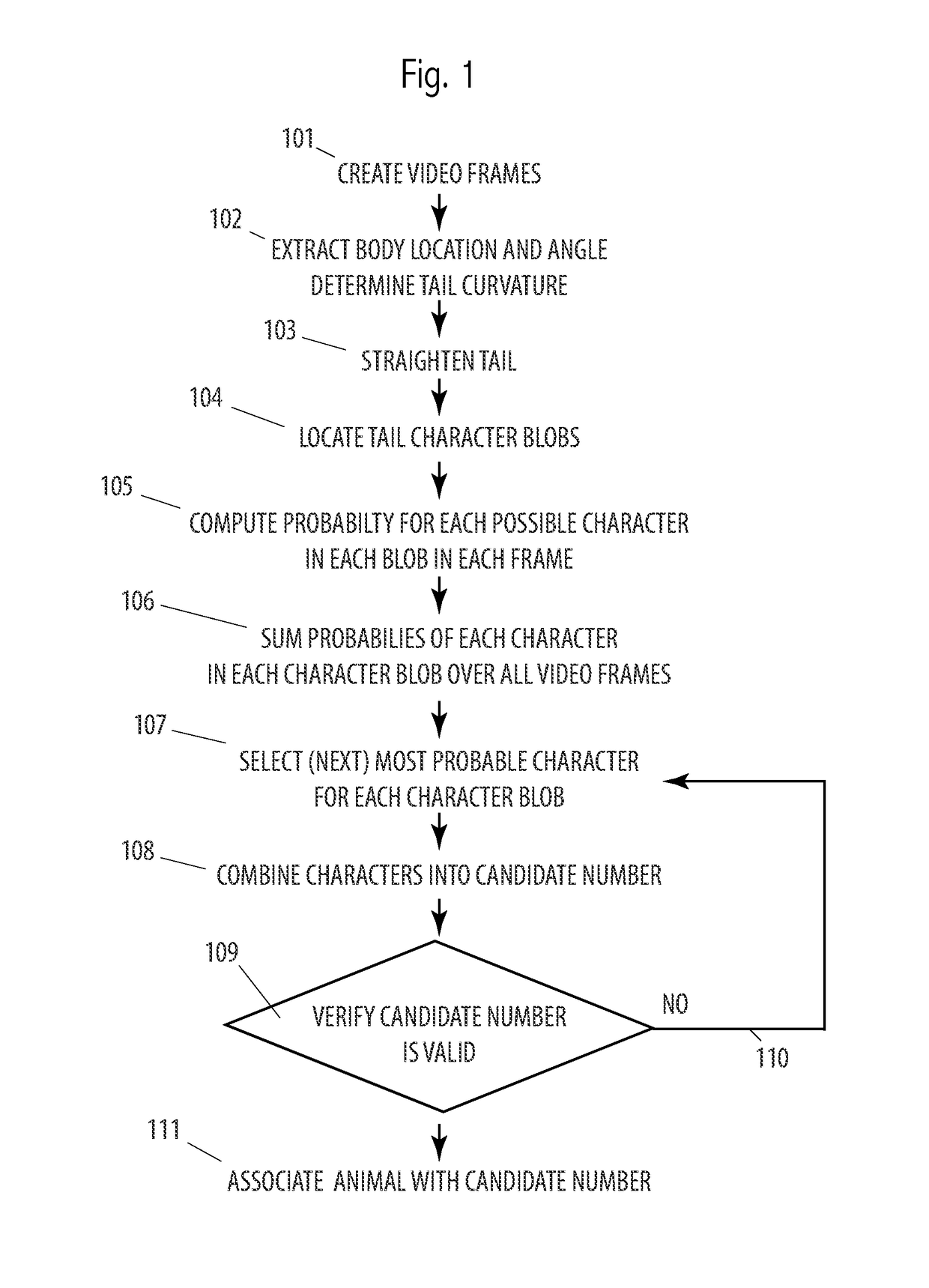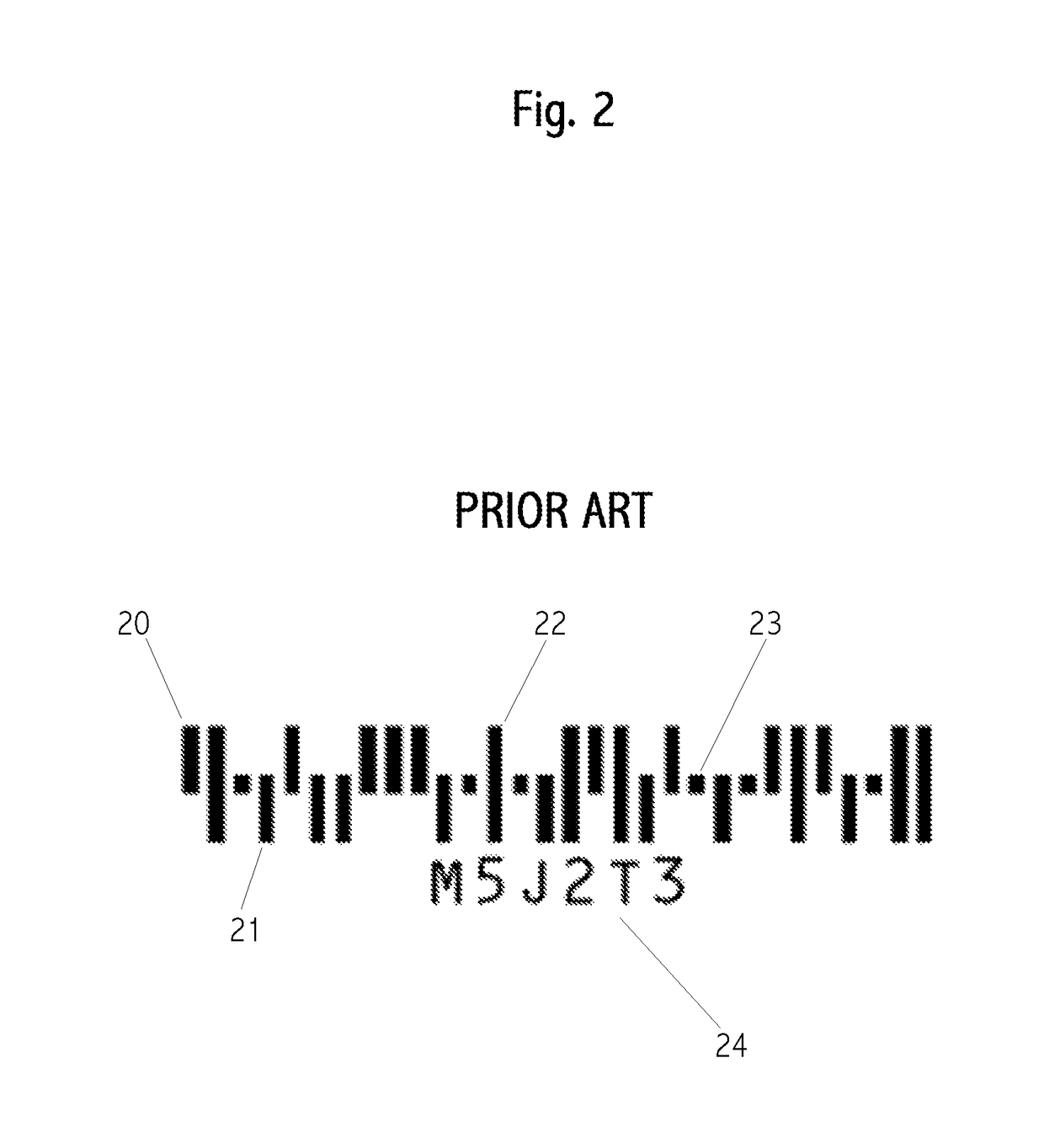Method of reading animal marks
a technology for animal tails and markings, applied in the field of reading animal marks, can solve the problems of large code space, complex markings, poor choice substrate for placing readable codes on small animal tails, etc., and achieve the effect of improving readability, reducing the number of codes available for marking animals, and improving the chance of reading correctly
- Summary
- Abstract
- Description
- Claims
- Application Information
AI Technical Summary
Benefits of technology
Problems solved by technology
Method used
Image
Examples
Embodiment Construction
[0060]Looking at FIG. 1 we see an exemplary embodiment. In step 101 video frames may be recorded of the interior of a cage in a vivarium, which houses more than one animal, such a mice or rats. For such cages, it is critical to know which mouse is which. Other embodiments of this invention are not restricted to rodents, or to tails, or to animals, or to vivaria. “Video frames” is to be interpreted broadly. Multiple frames from multiple cameras may be used; cameras other than video cameras may be used; light source other than visible light may be used; indeed, images may be created using no light at all; frame may be highly variable, from one frame per year to thousands of frames per second; frames may acquired in a short, contiguous time sequence or acquire over a long period time, from non-contiguous time intervals.
[0061]In step 102 a body location and body angle, such as for a mouse, is determined within each frame. In some embodiments, this step is optional or the information com...
PUM
 Login to View More
Login to View More Abstract
Description
Claims
Application Information
 Login to View More
Login to View More - Generate Ideas
- Intellectual Property
- Life Sciences
- Materials
- Tech Scout
- Unparalleled Data Quality
- Higher Quality Content
- 60% Fewer Hallucinations
Browse by: Latest US Patents, China's latest patents, Technical Efficacy Thesaurus, Application Domain, Technology Topic, Popular Technical Reports.
© 2025 PatSnap. All rights reserved.Legal|Privacy policy|Modern Slavery Act Transparency Statement|Sitemap|About US| Contact US: help@patsnap.com



